Mind Streaming
John Coxon's Online Journal|
Archive Search |
| Links |
|
and s-integrator |
Thursday, June 19, 2003
A LANCASHIRE COTTON MILL
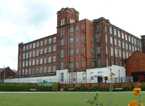
One of my elderly neighbours bowls at the green and he tells me what may be one of those local urban legends. The story goes that the mill was bought at the turn of the century by an American and , because he was homesick, he imported a silk cotton tree to remind him of home. Today there is a hundred foot high silk cotton tree that annually fills the air with cottony white fluff . It is visible from our back garden as is the back of the mill.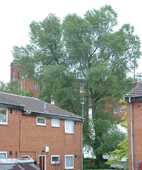
It is a native of central and tropical America and its close relative, the flox tree, gave off huge fluffy wads when the seed pods split that were collected and used to fill pillows and life jackets in the days before synthetic fibres. ( Silk cotton wood was used to make coffins, cricket bats, and much earlier, canoes. One of the Spanish names for the tree is "ceiba" from the Spanish for canoe. The latin name of the tree is Ceiba pentandra )Here is a shot of the trunk of the tree with some of the white fluffy stuff adhering to it
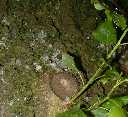
There is, historically a very strong link between the now defunct Lancashire Cotton industry and the United States. It appears that our ancestors who emigrated to the southern States in the 17th century developed cotton plantations, sadly with black slave labour, and thus, provided the county of Lancashire with its vital raw material at the cheapest price enabling the vast number of Lancashire mills to produce materials so cheaply that even poorer countries could buy their products. Those ancestors and those links are mirrored today in place names in the United (Southern ) States like Bolton, Manchester and so forth.
It appears that the Lancashire cotton industry was so lucrative in former times it was the most significant national industry here and was essential in terms of the wealth it generated helping to maintain the huge Empire Britain developed especially during the Victorian era . Conversely, the American Civil War had had a devastating effect on the regional economy with what is called the 'Cotton famine' or panic. The resulting shortage of cotton imports led to widespread unemployment and deprivation and the closing of a lot of mills. The industry was, however , still thriving during the Second World War when a government slogan of 1945 ran "England's bread hangs by Lancashire's thread".
There's a coincidence and link. During the Second World war an extension was built onto the fašade of Newtown mill to provide more adequate toilets for the hugely expanded work force over the war years. Up till then there was only a single toilet on each floor of the vast mill ! The cotton industry in Lancashire was virtually dead by the 70's and the prolific numbers of mills that land marked virtually every town in the region were either pulled down or put to other uses. A stone's throw from our house there was another big mill called Bridgewater Mill, long since demolished and remembered only in the name given to the housing estate built on the site.
Now I intend to write more on another occasion about this old mill, having made contact with a neighbour called Malcolm who has worked at the mill for thirty years and gleaned a great deal in his early years from the men who he worked with but remembered the old days, when for example, twelve year old boys stoked the boilers. Also , he tells me, the current owners, the Dorma bed linen manufacturing and marketing company are compiling a detailed archive of their companies advertising literature and also photographic and other archival material which should shed more light on the way things were in the mill. The millused to belong to the wealthy textile owning family, the astons's of Bolton. Angeal worked in one of their mills in former days !
Newtown Mill is not a listed building and is not only not protected as a heritage building, but , up to now, there has been little or no research done on it.
As well as the bowling green, there is also at the back of the mill what are known locally as the lodge. Lodges were water reservoirs or ponds that fed the mills' huge thirst for water, for power, heating and manufacturing processes. Stroll around the old building and notice the copious number of drain pipes of exaggerated dimensions.
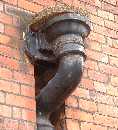
All the rain water pipes carried the rain directly into the two tiered lodges at the back of the mill and all the mill and miner's terraced houses had rain pipes that fed into the system that went directly to top up the mill ponds. So the mill got one of its most vital resources free. You might like to know that these lodges are at two different levels with a sluice system for regulating supply and that, whilst still owned by Dorma, they are let out to a local private angling club free of charge. The lodges are surrounded by a brick wall topped with barbed wire and yet, when I climbed onto a telephone junction box and looked over the wall, I saw this idyllic secret garden of a place, a veritable fishing paradise in the centre of an urban industrial settlement.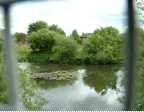
finally, you might like to know why the cotton industry thrived in our area. Partly it was climatic. Nearby Manchester, for example is quite often ridiculed as a place where it always rains. Not true , but the region's air is generally damp and that was good for the cotton threads not breaking in the spinning and weaving processes.
Salford and Manchester were the source of their own demise in terms of that formerly potent textile industry. A grand ship canal was built in Victorian times enabling Manchester and Salford to have a direct link to Liverpool , saving fortunes in import/ export costs and docking fees. But along the great canal grew many engineering works and the area was famous for many innovations that revolutionised the production of textiles from cotton. Those engineering firms began to export their innovative textile machinery enabling countries to begin production, at cheaper rates, often in the countries of origin of the raw materials. The thriving dockland of Salford Quays once a thriving major port, though restored now to its former glory in terms of development , is now simply a centre of enterprise, new accommodation and a blossoming tourist trade.
The current owners of the huge Newtown Mill do not, as I thought, mass produce bedding items in the mill. The majority of the floors are devoted to display and storage and what production there is , is that of sample making for major buyers. Much of their product range is actually produced in places like China. However, only this year, the company have changed direction a little and are training up some thirty machinists and will go into the production of sheets and pillow cases in the autumn on site. The reason? Some customers, who don't want particularly huge volumes may not be happy to endure the long wait times for goods to be shipped in from, say China, and thus, the company intends to meet that demand on site in the future. It is reassuring that we are seeing local , a little growth in an industry that had in the past been quite literally kicked to death by foreign competition.
johncoxon 12:32 AM - [Link] - Comments ()
...